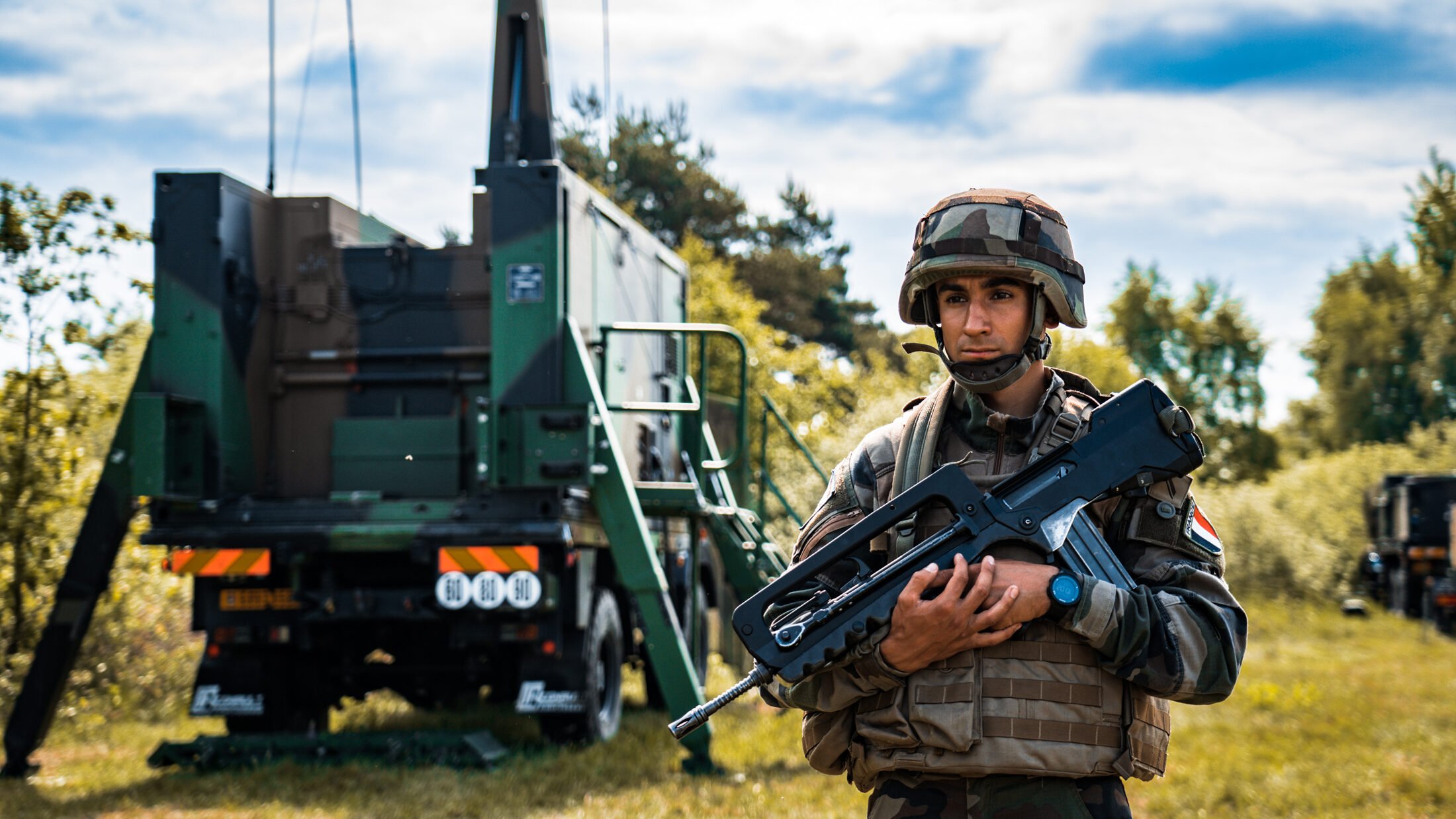
French soldier scans the area in front of the French weapon system during exercise Ramstein Legacy 22, a NATO large-scale live-fire air defence exercise. Seventeen Allied and partner countries trained in Estonia, Latvia, Lithuania and Poland with aircraft, missile defence systems and electronic warfare systems from 6 to 10 June 2022. (NATO)
WASHINGTON — As NATO continues to adjust to the new geo-strategic reality in Europe in the wake of Russia’s invasion of Ukraine, a next step is for the alliance to work out plans for responding to aggression that will help better align member military postures to implement them, according to former Supreme Allied Commander Europe and retired US Air Force Gen. Tod Wolters.
“[W]hat will occur are graduated response plans that take into account the NATO Military Strategy, the NATO Strategic Concept, and regional plans. And that allows for better alignment with military activity as it connects to whole-of-government activity throughout NATO. I think that is very, very important,” he told the Mitchell Institute today.
The new NATO Strategic Concept was agreed at the alliance’s summit in Madrid in June 2022, and was aimed at taking into account the new geopolitical landscape including Russia’s multi-faceted aggression in Europe and China’s growing power in the Indo-Pacific.
As part of that force realignment, he elaborated, NATO likely will maintain a “semi-permanent” presence along its Eastern front for many years to come, said Wolters, who retired just after the summit in July 2022.
He explained that the 30 NATO member nations have been beefing up their presence, via mixed nation rotational deployments in Eastern Europe starting before Russia invaded Ukraine in February 2022.
In 2017, NATO established four multinational battalion-size battlegroups in Estonia, Latvia, Lithuania and Poland, led by the United Kingdom, Canada, Germany and the United States. Following Russia’s move into Ukraine, the allies reinforced those battlegroups, and established four more multinational battlegroups in Bulgaria, Hungary, Romania and Slovakia.
“When you take a look at the NATO military posture in the vicinity of Eastern Europe, pre-invasion and post-invasion, you can see that we’ve comfortably doubled in size with respect to the number of battalion-size battlegroups that possess all domain capability from a command and control perspective,” Wolters said.
During NATO’s summit in Madrid in June, the allies also “agreed to enhance the multinational battlegroups from battalions up to brigade-size, where and when required,” according to a NATO fact sheet.
Asked about his comments in March during a House Armed Services Committee hearing citing the need for a permanent NATO air and land presence in Eastern Europe, Wolters explained that forces are provided to the current battlegroups on a “rotational” basis, with a mix of NATO member nations contributing. He noted that, in his view, those deployments should continue along the same lines for the foreseeable future.
“[T]he context of the question in the hearing had to do with permanent and rotational, and my response was, yes, to both,” he said.
“[F]rom a posture perspective for NATO militaries, we needed to construct battalion-sized battlegroups in southeastern Europe, with the same architecture that we had in the Baltics, and that is more in line with a semi-permanent basing, if you will, because … we rotate forces from nations into those battalion-sized battlegroups today in all eight of those countries,” Wolters elaborated. “I contend that that is something that … will probably remain for a very, very long time.”
Army eyes TBI monitoring, wearable tech for soldiers in high-risk billets
“We are also looking at what additional personal protective equipment we can provide to our folks, especially instructors and others who are routinely exposed to blast pressure,” said Army Secretary Christine Wormuth.


























